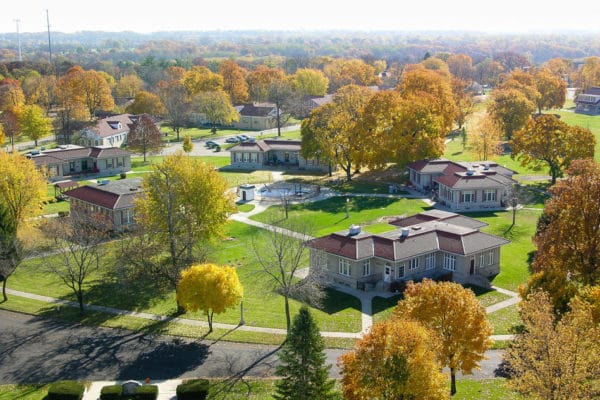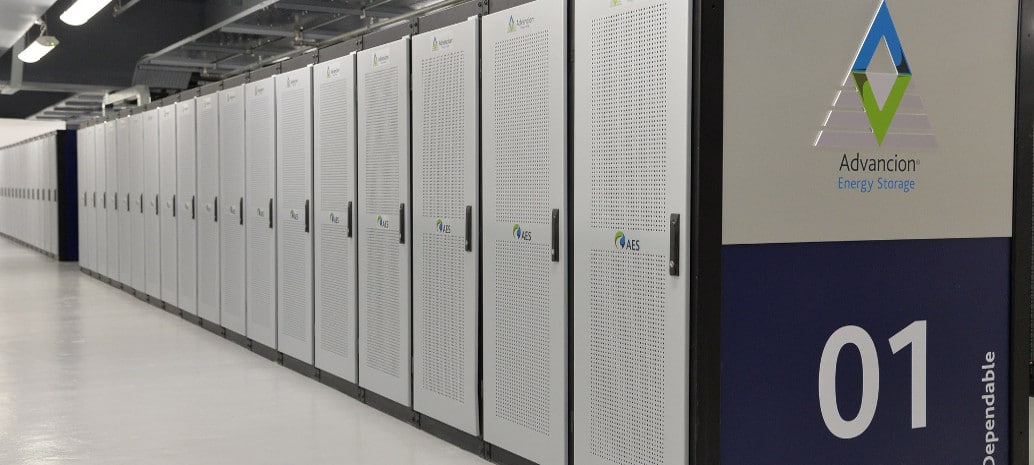AES Corp. closed $154.2 million in non-recourse debt financing for Luna Storage, a 400 MWh standalone lithium-ion battery storage project in Lancaster, Calif.
The deal was closed by sPower, an independent power producer, in late December and announced February 8. In early January, sPower merged to become part of AES’ clean energy business in the United States.
The debt was arranged by KeyBanc Capital Markets Inc., Credit Agricole Corporate and Investment Bank, Silicon Valley Bank, and Export Development Canada. An Energy Storage Agreement (ESA) with Clean Power Alliance (CPA) was signed in April 2020, making this one of the largest ESAs for a Community Choice Aggregation in California.
Luna Storage has a 15-year contract and is expected to come online later in 2021. Clean Power Alliance serves around one million customer accounts.
Li-ion battery recycling competition advances
Seven teams from across the United States are advancing to the third step of a competition sponsored by the U.S. Department of Energy to develop innovative ways to recycle lithium-ion batteries.
The $5.5 million competition is intended to help achieve DOE’s goal to capture 90% of all spent lithium-ion batteries for eventual recycling of critical materials and reintroduction into the supply chain. The National Renewable Energy Laboratory is the prize administrator.
The seven teams moving on to the third phase are:
Li Industries (Blacksburg, Virginia): Li Industries is developing a machine-learning-based, automated Smart Battery Sorting System capable of accurately and efficiently sorting and separating batteries by several characteristics, including chemical composition, size, weight, and packaging type.
OnTo Technology (Bend, Ore.): OnTo’s deactivate, identify, sort, and cut solution provides safe and efficient end-of-life processing of waste batteries by sorting lithium-ion batteries by cathode chemistry.
Powering the Future (Glendale, Wis.): Clarios is leveraging the existing network of collection for lead-acid batteries to collect end-of-life (EOL) lithium-ion batteries, applying innovative technologies to handle mixed EOL batteries and ultimately optimize the network’s value.
Renewance (Chicago, Ill.): The Renewance Connect asset tracking and marketplace concept optimizes reverse logistics and recycling activities by improving access to and utilizing existing infrastructure for decommissioning, collection, warehousing, sorting, transportation, and recycling services.
Smartville (San Diego, Calif.): Smartville is deploying distributed heterogeneous unifying battery facilities to reduce costs and create value in the reverse-logistics supply chain by balancing, conditioning, and certifying lithium-ion batteries before repurposing for secondary use or shipped to recyclers.
Team Portables (Seattle, Wash.): Reward to Recycle is a consumer engagement smartphone app allowing consumers to learn how to earn a reward for recycling their battery. This app uses a digital identity to track portable lithium-ion batteries and support final recycling.
Titan Advanced Energy Solutions (Sommerville, Mass.): The Battago platform will generate, aggregate, and connect battery data to create a transparent marketplace and bridge the gap between battery owners, integrators, and end-of-life recyclers.
The seven teams each receive a $357,000 cash prize and $100,000 in non-cash vouchers to use at national laboratories and approved organizations within the American-Made Challenges Network.
ForeFront commissions solar array for school
ForeFront Power announced commercial operation a 2.8 MW project to deliver power to the Mooseheart Child City and School in Illinois. The array is expected to produce 3.6 million kWh of electricity during the first year of operation.

Image: PRnewsfoto/ForeFront Power
The solar project received incentives through the state’s Adjustable Block Program (ABP), which was established by the Future Energy Jobs Act to support development of new photovoltaic distributed generation and community solar projects in Illinois.
The Mooseheart solar project is a single ground-mounted project sited on a 1,000-acre campus 38 miles west of Chicago. Progressive Energy Group of Aurora, Ill., helped Mooseheart Child City and School source the electricity deal. SolAmerica served as ForeFront Power’s engineering, procurement, and construction partner.
A steeper climb to reach Paris
A University of Washington study finds that emissions reductions need to be about 80% more ambitious than those in the Paris Agreement–or an average of 1.8% drop in emissions per year rather than 1% per year—are required to stay within 2 degrees Celsius of warming this century, the international climate treaty’s goal.
The results were published Feb. 9 in Nature’s open-access journal Communications Earth & Environment. They update a 2017 study by the same team.
The newly updated paper uses the same statistical approach as the 2017 research to model three drivers of human-produced greenhouse gases: national population, gross domestic product per person, and the amount of carbon emitted for each dollar of economic activity, known as carbon intensity. It then uses a statistical model to show the range of likely future outcomes based on data and projections so far.
Even with updated methods and five more years of data, now spanning 1960 through 2015, the conclusion remains similar to the previous study: Meeting Paris Agreement targets would give only a 5% probability of staying below 2 degrees Celsius warming.
The researchers said that increasing the overall targets to cut carbon emissions by an average of 1.8% annually, and continuing on that path after the Paris Agreement expires in 2030, would give the planet a 50% chance of staying below 2 degrees warming by 2100.
“Achieving the Paris Agreement’s temperature goals is something we’re not on target to do now, but it wouldn’t take that much extra to do it,” said first author Peiran Liu, who did the research as part of his doctorate work at the university.
The United States pledged a 1% drop in carbon emissions per year until 2026, a bit more ambitious than the average. China pledged to reduce its carbon intensity, or the carbon emissions per unit of economic activity, by 60% of its 2005 levels by 2030.
Assuming that each country’s share of the work remains unchanged, the researchers said the U.S. would need to increase its goal by 38%. China’s more ambitious plan would need only a 7% boost.
The researchers also suggest that countries increase their accountability by reviewing progress annually, rather than on the five-year, 10-year or longer timescales included in many existing climate plans.
This content is protected by copyright and may not be reused. If you want to cooperate with us and would like to reuse some of our content, please contact: editors@pv-magazine.com.









By submitting this form you agree to pv magazine using your data for the purposes of publishing your comment.
Your personal data will only be disclosed or otherwise transmitted to third parties for the purposes of spam filtering or if this is necessary for technical maintenance of the website. Any other transfer to third parties will not take place unless this is justified on the basis of applicable data protection regulations or if pv magazine is legally obliged to do so.
You may revoke this consent at any time with effect for the future, in which case your personal data will be deleted immediately. Otherwise, your data will be deleted if pv magazine has processed your request or the purpose of data storage is fulfilled.
Further information on data privacy can be found in our Data Protection Policy.